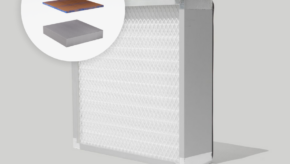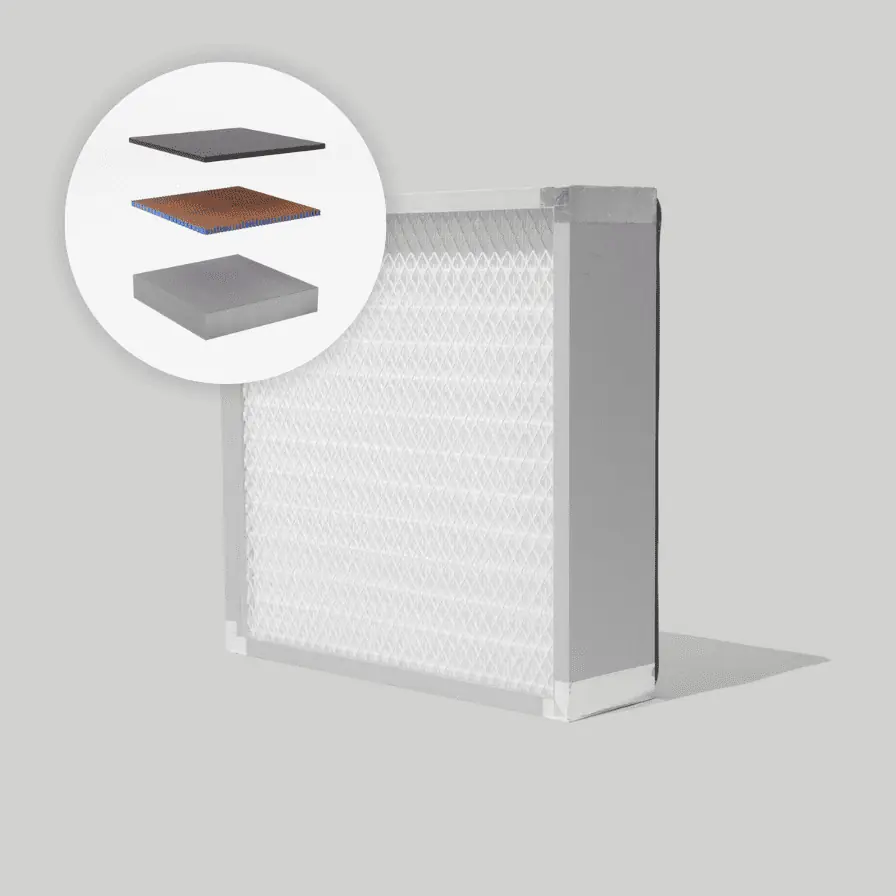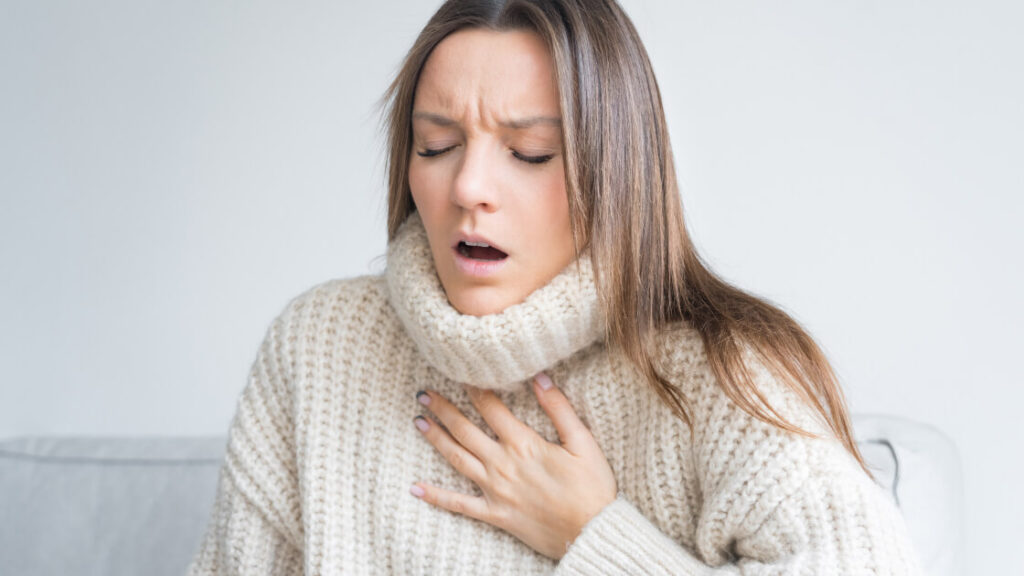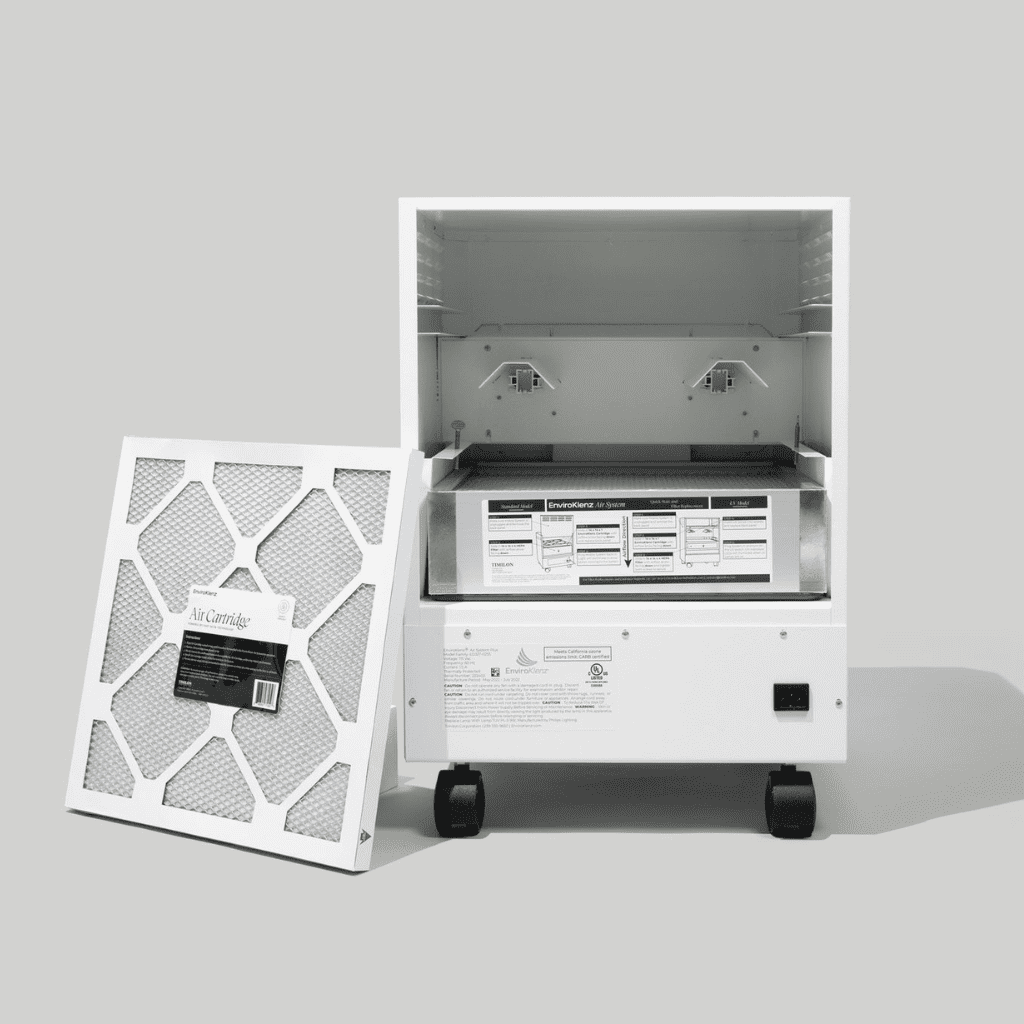There is nothing quite like the fresh, clean smell that will be left hanging in the air after you give your home that thorough cleaning that it has desperately been needing. Cleaning your home will usually consist of a variety of different cleaning agents, from glass cleaners, oven cleaners, surface cleaners, and even air fresheners that will all help to provide your home with a fresh, clean scent. The cleaning agents that most homeowners typically use will contain an amalgam of chemicals within its composition that will all work in a specific way to deliver the desired cleaning that the person is looking for in their environment. Although these cleaning agents will be an effective solution to cleaning your home, they will also be a source of pollution in your indoor air that will likely compromise the environment for an ambiguous period of time after its application in the indoor space.
Sodium hypochlorite, also known as bleach, is one of the most widely available cleaning agents that is used in a home as a disinfectant to kill germs, bacteria, and viruses. When it comes to the use of bleach in a home, it can be used in nearly every area of the home including toilets, flooring, walls, counters, etc. Due to bleach’s versatile use, when it is heavily used in a home in several areas it can lead to a high level of bleach smell or fumes in the indoor air that will eventually lead to adverse effects on the health of occupants. Is breathing in bleach bad for human health and what can be done to try to mitigate this cleaning agent from a home’s air space?
In this article we are going to learn more about bleach and if breathing in bleach is bad for human health, along with how to effectively get rid of bleach fumes in an indoor environment.
What is Bleach
Bleach is a chemical product that is used both industrially and domestically in many households to provide the indoor space with a thorough disinfectant cleaning agent. There are many different variations of bleach that will all contain a different chemical composition and ingredients, with many of these bleaches having broad spectrum bactericidal properties that allow the bleach to disinfect and sterilize. There are three classes of bleach that are used in most household bleaches; chlorine-based bleach, peroxide-based bleach, and sulfur dioxide-based bleach. Below we are going to compare these different types of bleaches and how they all work in an indoor environment like a home.
- Chlorine-Based Bleach: A type of bleach that is found in many household bleach products, chlorine-based bleach is also used in specialized products for hospitals, public health, water chlorination, and industrial processes. The active ingredient in this bleach class is chlorine, which is derived from the decomposition of some chlorine compounds like hypochlorite and chloramine.
- Peroxide-Based Bleach: Peroxide-based bleach is a bleach product that is based on the peroxide chemical group. This type of bleach is commonly used in laundry detergents because it easily dissolves in water. Peroxide bleach is considered to be an eco-friendly cleaning agent and thus its appeal to consumers.
- Sulfur-Dioxide Based Bleach: Sulfur-dioxide is a permanent bleaching agent, that works by removing oxygen from the colored substances and makes it colorless.
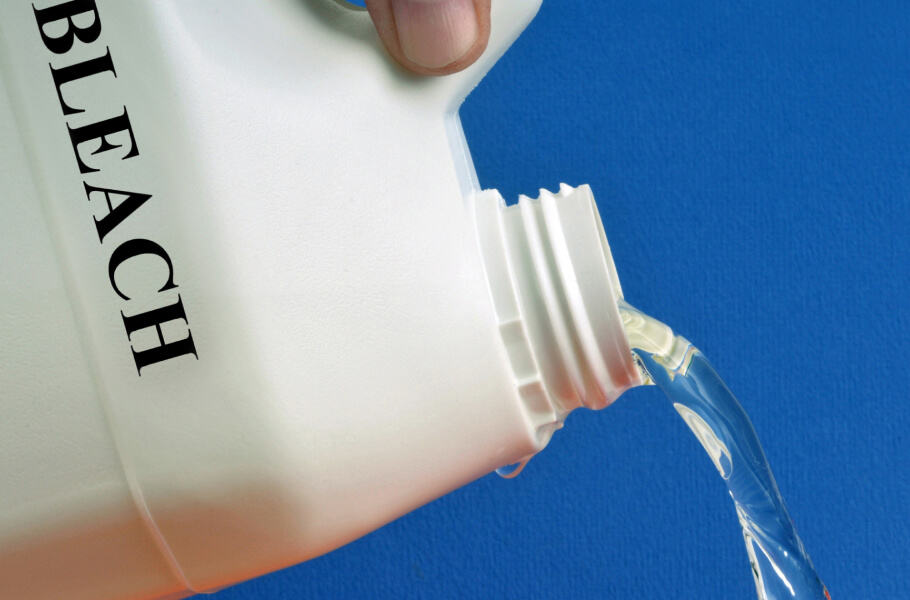
Is Bleach Safe?
The impact that bleach can have on an indoor environment and the health of those individuals that are exposed to the bleach fumes and smells can vary depending on the environment, the amount of bleach that has been used in the space, and the pre-existing health of those individuals that are exposed to bleach in their home. When you clean with bleach it will usually pack quite the odorous punch in the space it is used and the dangers/risks of using this chemical will come significantly when bleach is mixed with other chemicals agents that are present and used in the environment. Bleach is a reactive chemical compound and when it is mixed with other chemicals, specifically ammonia, this toxic mixture will lead to the production of chloramine fumes into the air, according to the Washing State Department of Health.
Bleach will become unsafe when mixed with ammonia smell and other similar chemicals that can create a dangerous production of fumes in the air. When humans are exposed to bleach fumes it can cause an array of adverse symptoms such as irritation to the eyes, mouth, lungs and skin. Additionally, it can also exacerbate symptoms of asthma in those who suffer from this condition, which can be particularly dangerous in most cases.
Bleach Side Effects
Bleach fumes can have different effects on your health, as this chemical agent can be inhaled, ingested, or absorbed into the skin of an individual. When this type of exposure occurs, it can create bleach side effects that will lead to health issues in most people. When a person breathes in bleach fumes in their home, either through the use of different cleaning products or even from using it in laundry it can cause harm to an individual, both short-term and long-term health effects. Short-term health effects of bleach inhalation include lung irritation, coughing, shortness of breath, vomiting, nausea, and skin irritation, according to the Michigan Department of Community Health (MDCH). Whereas long-term exposure of bleach fumes can lead to lung diseases like bronchitis and shortness of breath.
House Smells Like Bleach After Cleaning
After you have cleaned your home with bleach, there can be a strong residual bleach odor that hangs in the airspace of the environment that will taint the smell of the air completely. The causes behind why your house smells like bleach after cleaning it is mainly due to the conditions inside of this space, particularly the air flow and ventilation in this confined environment. Ventilation is a component of a home that can ultimately restrict airflow into the home and out of the home, which will trap pollutants and odors that have been collected in the indoor air of a home. Most newer built homes today are built compactly with very little ventilation, which will restrict the air flow and lead to the buildup of pollutants and airborne odors in the space, and thus, this can make your home smell strongly of bleach after using this cleaning agent.
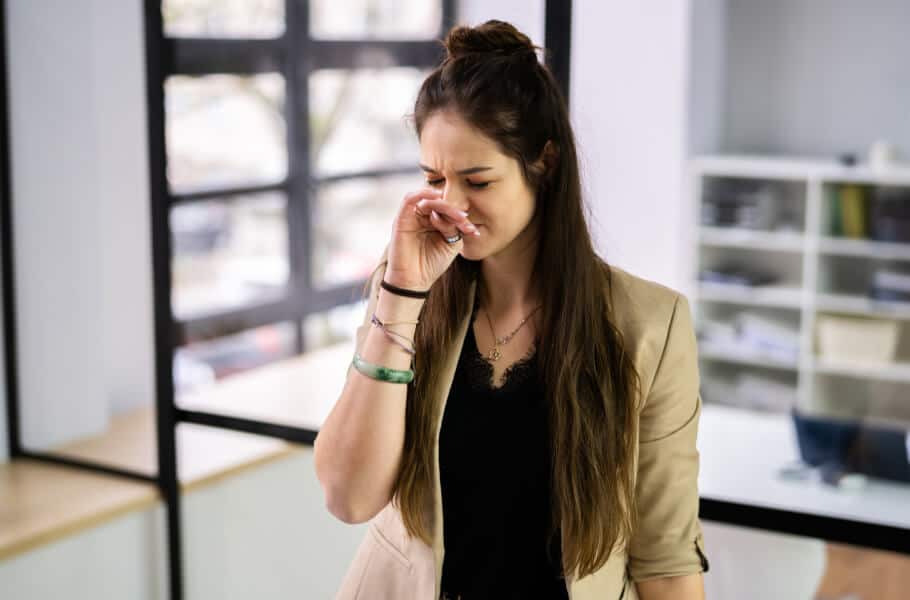
What Does Bleach Smell Like
The wafting aroma of bleach in the air can circulate within the air space of a home, and this smell is often what most homeowners associate with the smell of clean – especially due to its disinfectant properties. Bleach has a very distinctive odor when it is used in a confined space like a home, and when the cleaning agent is used in large quantities throughout the space it can produce its strong chlorine-smell into the air space.
Individuals will have either a love or hate relationship with the bleach smell that is produced from bleach cleaning agents. Some individuals, as I said earlier, associate bleach with clean and thus when their home smells like bleach it is something that they are happy with in the indoor air. Others, however, will fall in the category of hating the smell of bleach due its strong-smelling chlorine-like fume odors that is will emit into the house after its use. Overall, the bleach smell is a recognizable odor that is considered to be a fairly abrasive odor when it is present in your home’s indoor air space.
How Long Does Bleach Smell Last
The question of how long does bleach smell last inside of a home following its application and use in the space is not something that is black and white – as there are many factors that will aid and contribute to the longevity of bleach fumes in the air space of an environment. As we discussed before, the ventilation and airflow that is available in a home will drastically impact the chemicals and odors that are harbored within the air space of this indoor environment. The less air flow and ventilation that you have in your indoor space, the longer the bleach smell will last in the air of your home – which can ultimately leave the environment toxic to both individuals and to the indoor air quality in the space as bleach fumes begin to reach high levels in the air.
Can the Smell of Bleach Harm You?
The smell of bleach is often described as a strong, corrosive, and even irritating odor that will taint the indoor space of a home after it has been used heavily in the environment. When bleach is used it can release its chemical composition into the air, producing bleach fumes that will lead to a compromised air space that may have an adverse impact on those individuals that live in this space who are heavily exposed to these fumes in their air. In addition, if bleach is improperly handled or accidental chemical mixtures occur it can lead to a far more toxic situation in the indoor environment. If bleach comes into contact with an individual either through inhaling bleach, ingestion, or adsorption through the skin it can lead to major irritation that can be harmful to an individual’s health.
According to the California Department of Pesticides Regulation, they state that bleach was the cause of 34,000 calls to U.S. poison control centers in 2011, and of these 34,000 calls 12,000 of them were related to children under the age of 5. Children, in particular, can experience extreme harm from bleach exposure, this is because children’s lungs are still developing which makes them at a greater risk of breathing in bleach vapors.
How to Get Rid of Bleach Fumes
If you have recently used or applied bleach within your home the overbearing smell of bleach fumes may be in high concentrations in the air space of this environment. Bleach fumes can be present in the air from excessive bleach use, spills or accidents, or even from the mixture of bleach with other chemical agents like ammonia, all of these events will cause toxic bleach fumes in the space. The process of eradicating these bleach fumes from the air space of a home can be somewhat challenging and may require time to thoroughly remove completely. Below we are going to discuss the best steps to take to get rid of bleach fumes in the air of a home.
- Open all windows and doors in the area, to help increase airflow within the space. This will help to flush out contaminated air with fresh clean air, which will help to minimize and reduce the bleach odors in the air.
- Add additional airflow into the environment. Increasing air flow can be done by putting fans within the space which will help to keep the air circulating, which will help to dilute the bleach fumes smell.
- Place baking soda or charcoal onto a plate in the environment which both have been known to help absorb odors that can contaminate an indoor environment.
- Integrate a high-efficiency air purification device into the home, this will help to filter the indoor air of pollutants and odors and restore the air space back to normal conditions.
Bleach Neutralizing Air Purifier
An air purifier is a device that is designed to clean the indoor air of an environment by removing pollutants that are present in the air space. These air cleaning devices come in a variety of different variations, all of which will use a specific technology to filter the air within these machines. Some of the more popular air purifier technologies include carbon, ozone, ionizers, and HEPA filtration – with some of these working to remove pollutants, odors, and/or chemicals from the air. Thus, when it comes to filtering and neutralizing bleach fumes from the air of a home, it is best to do your research to ensure that you pick the ideal air purifier that will effectively work to neutralize the chemical composition of bleach fumes in the air.
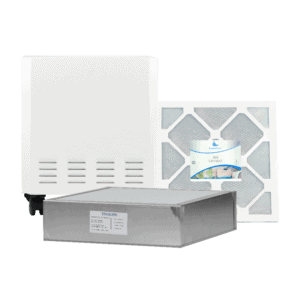
The EnviroKlenz Air Purifier is a revolutionary air purification device that works to not only remove pollutants from the air but will also completely neutralize chemicals and odors from the air space. The EnviroKlenz® technology is a proprietary earth mineral material that is designed to favorable interact with a broad spectrum of chemical and odor compounds present in the air space by capturing, containing, and neutralizing them completely in the earth mineral technology. In addition, the EnviroKlenz Air Purifier also contains a second-stage filtration using a hospital-grade HEPA filter for fine particulate removal larger than 0.3 microns in size at a 99.99 percent efficiency. Simply, install the two filters into the machine, close the back, and turn the system on to begin eradicating pollutants from the air, including bleach fumes with ease and effectiveness.
Article Sources:
- Washington State Department of Health: Dangers of Mixing Bleach with Cleaners (link)
- Michigan Department of Community Health (MDCH): Bleach Fact Sheet (link)
- California Department of Pesticide Regulation: What’s the Problem with Bleach? (link)
EnviroKlenz® Medical Disclaimer:
“Any information that is provided on this website is not for the use by any commercial or personal entity without expressed written consent of the blog author. The material and statements illustrated within this blog are not intended to diagnose, treat, cure, or prevent any diseases or medical conditions. Nor does the author in any way guarantee or validate the validity, totality, or efficacy of any claims and will therefore not be held responsible for the content of any claims. Always consult your medical physician for any specific medical advice or recommendations.”

